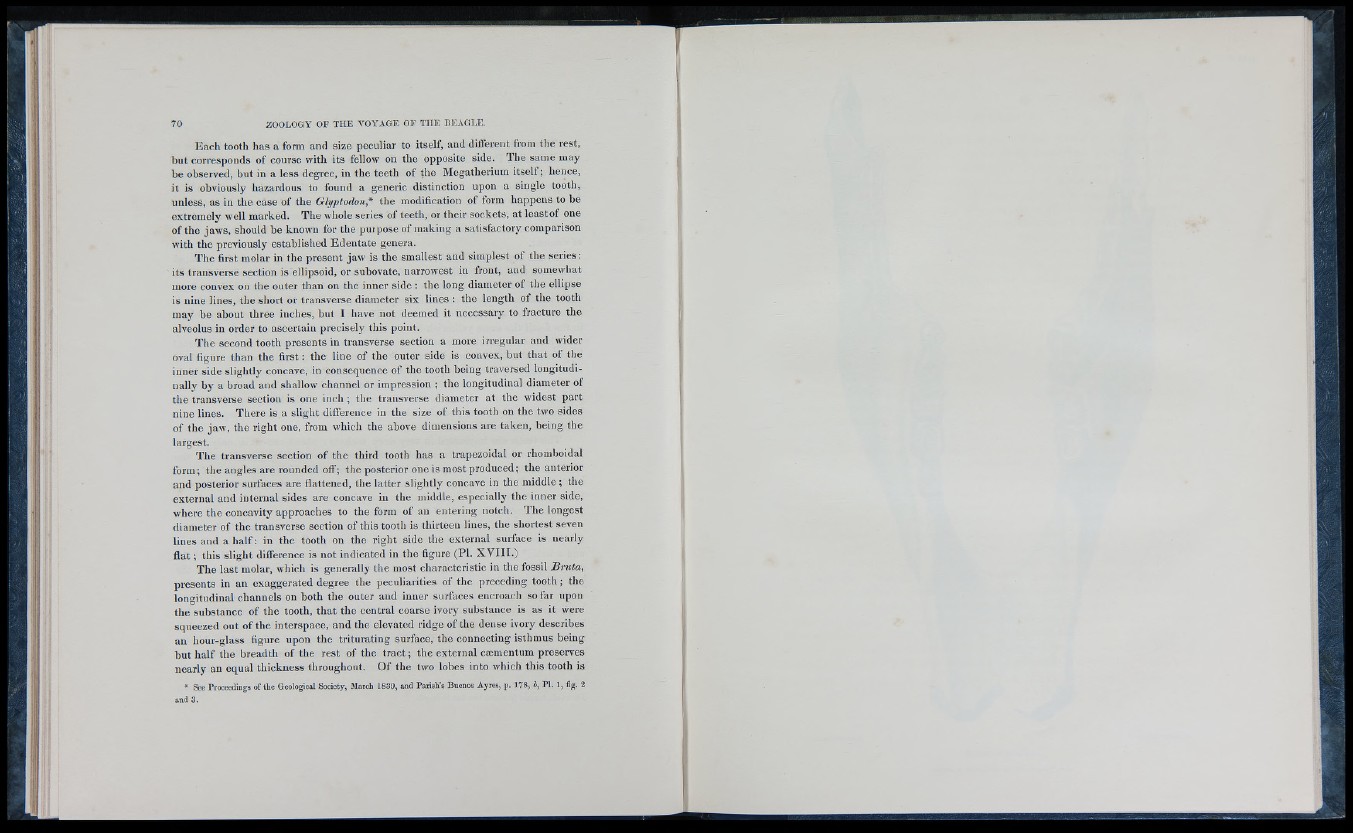
Each tooth has a form and size peculiar to itself, and different from the rest,
but corresponds o f course with its fellow on the opposite side. The same may
b e observed, but in a le ss degree, in the teeth o f flie Megatherium itse lf; hence,
it is obviously hazardous to found a generic distinction upon a single tooth,
unless, as in the. case o f the G lyptodon* the modification o f form happens to be
extremely well marked. The whole series o f teeth, or their sockets, at le a sto f one
o f the jaws, should be known for the purpose o f m aking a satisfactory comparison
with the previously established Edentate genera.
The first molar in the present jaw is the smalle st and simplest of the series:
its transverse section is ellipsoid, or subovate, narrowest in front, and somewhat
mure convex on the outer than on the inner side : the long diameter o f the ellipse
is nine lines, the short or transverse diameter six lines : the length o f the tooth
may be about three inches, but I have not deemed it necessary to fracture the
alveolus in order to ascertain prec isely this point.
The second tooth presents in transverse section a more irregular and wider
oval figure than the first : the line o f the outer side is convex, but that o f the
inner side slightly concave, in consequence o f the tooth being traversed longitudinally
by a broad and shallow channel or impression ; the longitudinal diameter of
the transverse section is one inch ; the transverse diameter at the widest part
nine lines. Tliere is a slight difference in the size o f this tooth on the two sides
o f the jaw, the right one, from which the above dimensions are taken, being the
largest.
The transverse section o f the third tooth has a trapezoidal or rhomboidal
form; the angles are rounded off; the posterior one is most produced; the anterior
and posterior surfaces are flattened, the latter slightly concave in the middle ; the
external and internal sides are concave in the middle, especially the inner side,
where the concavity approaches to the form o f an entering notch. The longest
diameter o f the transverse section o f this tootli is thirteen lines, the shortest seven
lines and a h a lf; in the tooth on the right side the external surface is nearly
flat ; this sligh t difference is not indicated in the figure (PI. X V I I I .)
T h e la st molar, which is generally the most characteristic in the fossil B ru ta ,
presents in an exaggerated degree the peculiarities o f the preceding tooth ; the
longitudinal channels on both the outer and inner surfaces encroach so far upon
the substance o f the tooth, that the central coarse ivory substance is as it were
squeezed out o f the interspace, and the elevated ridge o f the dense ivory describes
an hour-glass figure upon the triturating surface, the connecting isthmus being
but h a lf the breadth of the rest of the tract; the external cæmentum preserves
nearly an equal thickness throughout. O f the two lobes into which this tooth is
* See Proceedings of the Geological Society, March 1839, and Parish’s Buenos Ayres, p. 178, h, PI. 1, fig. 2
and 3.